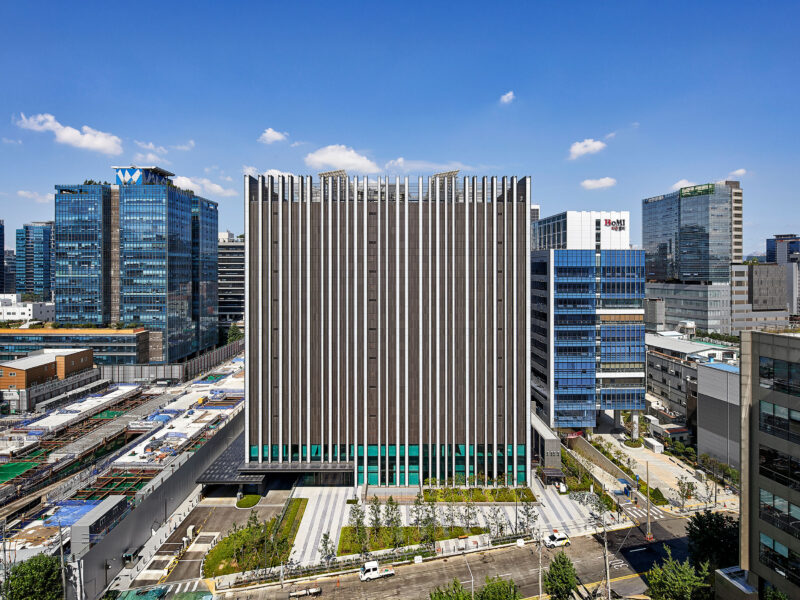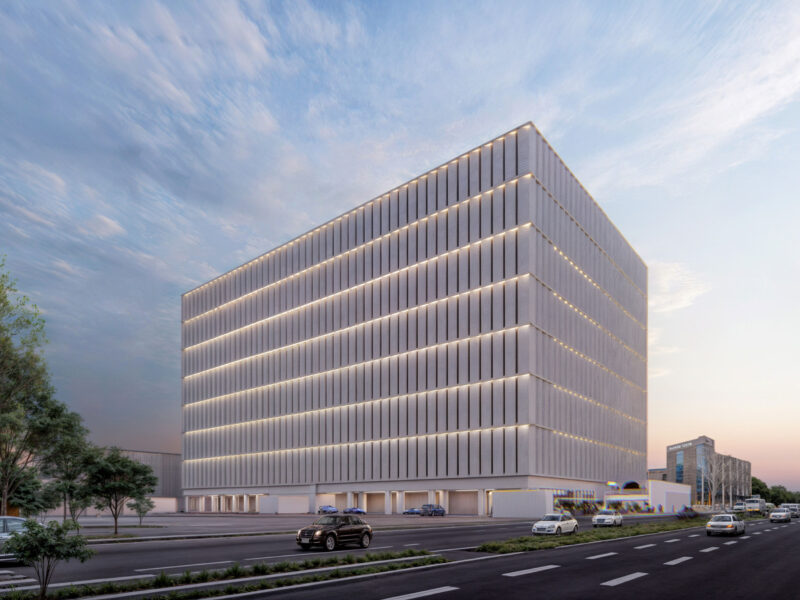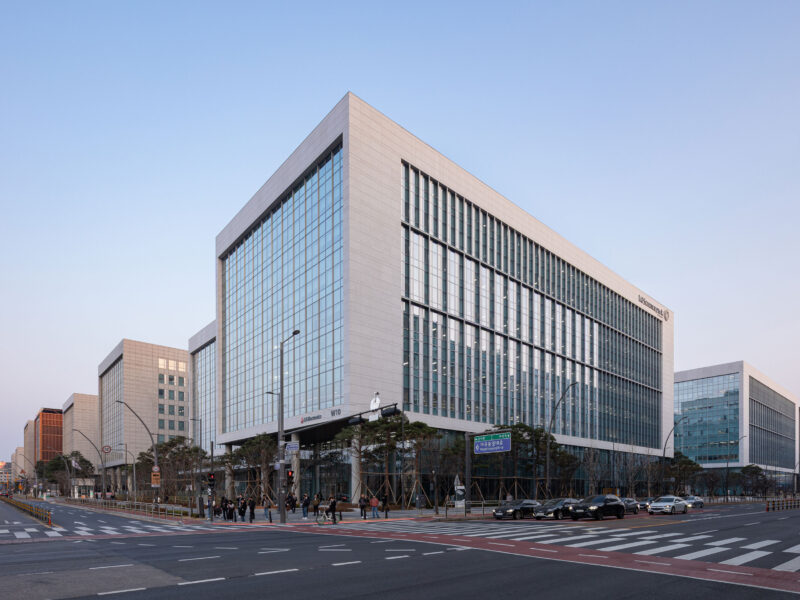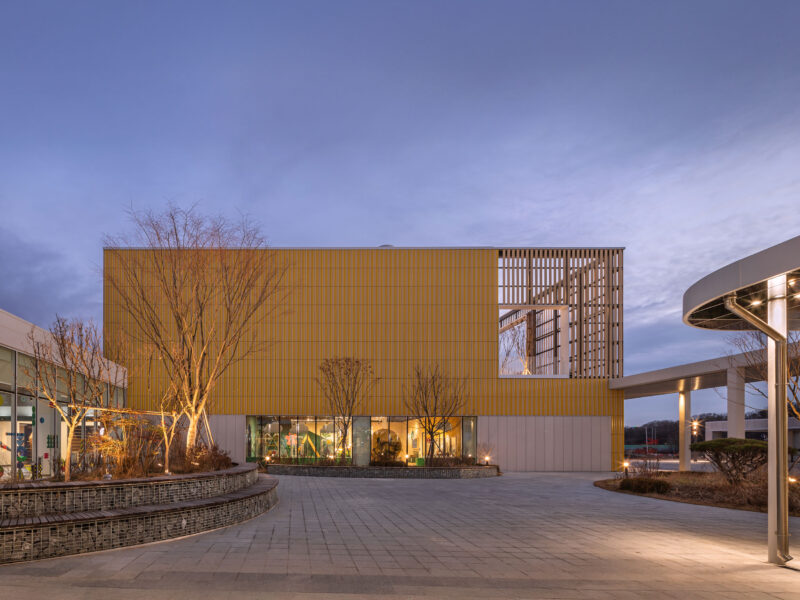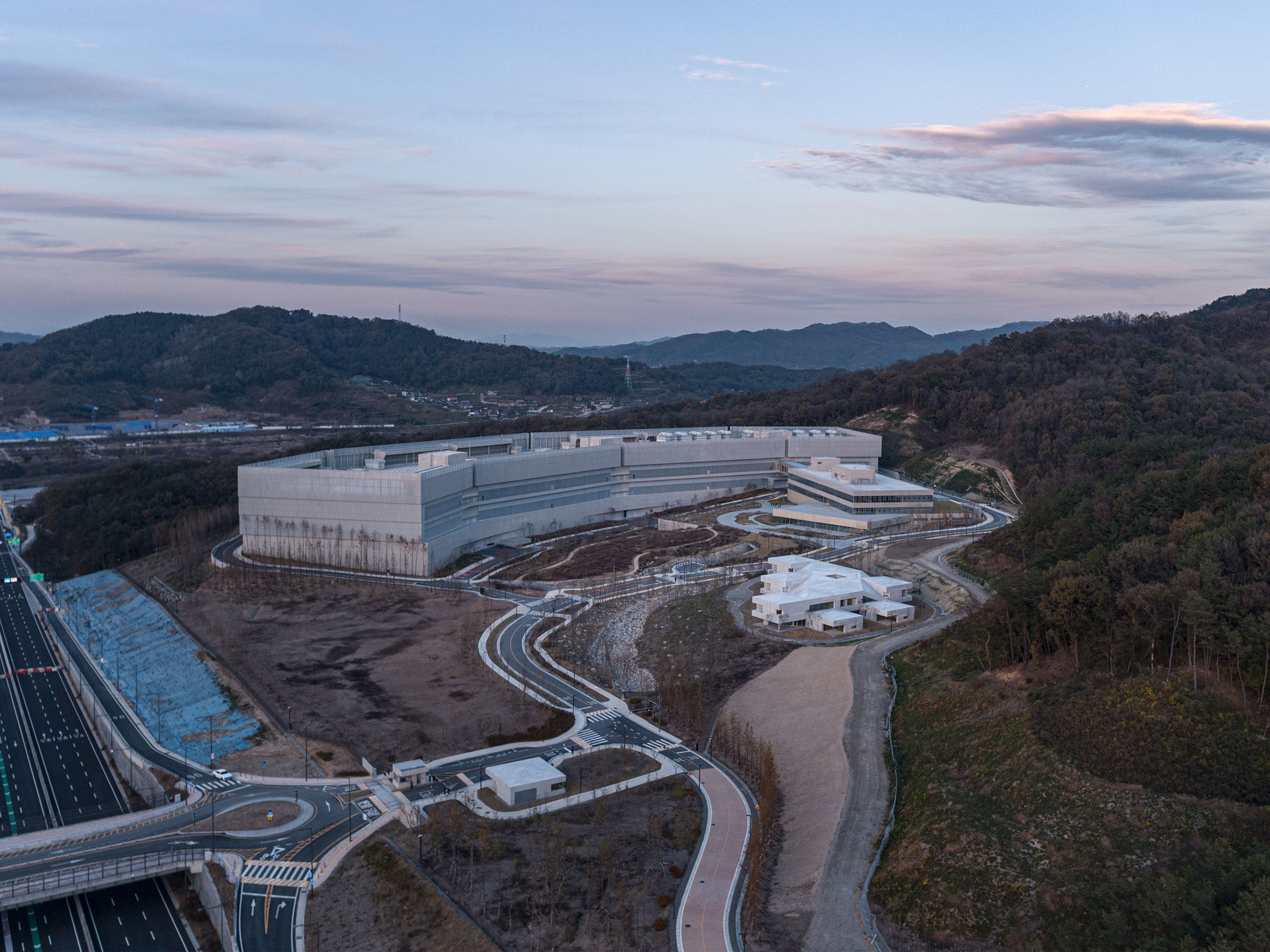
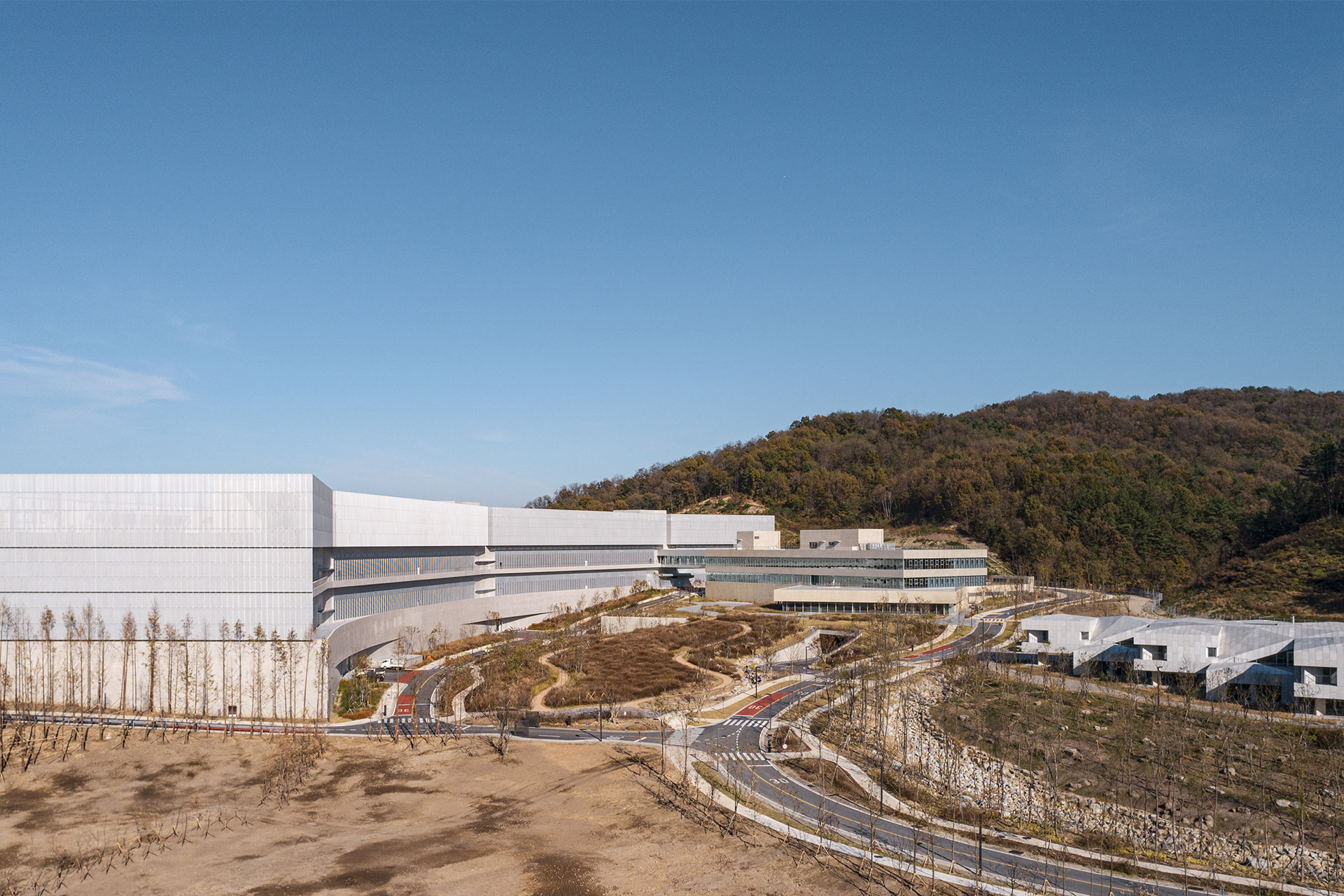
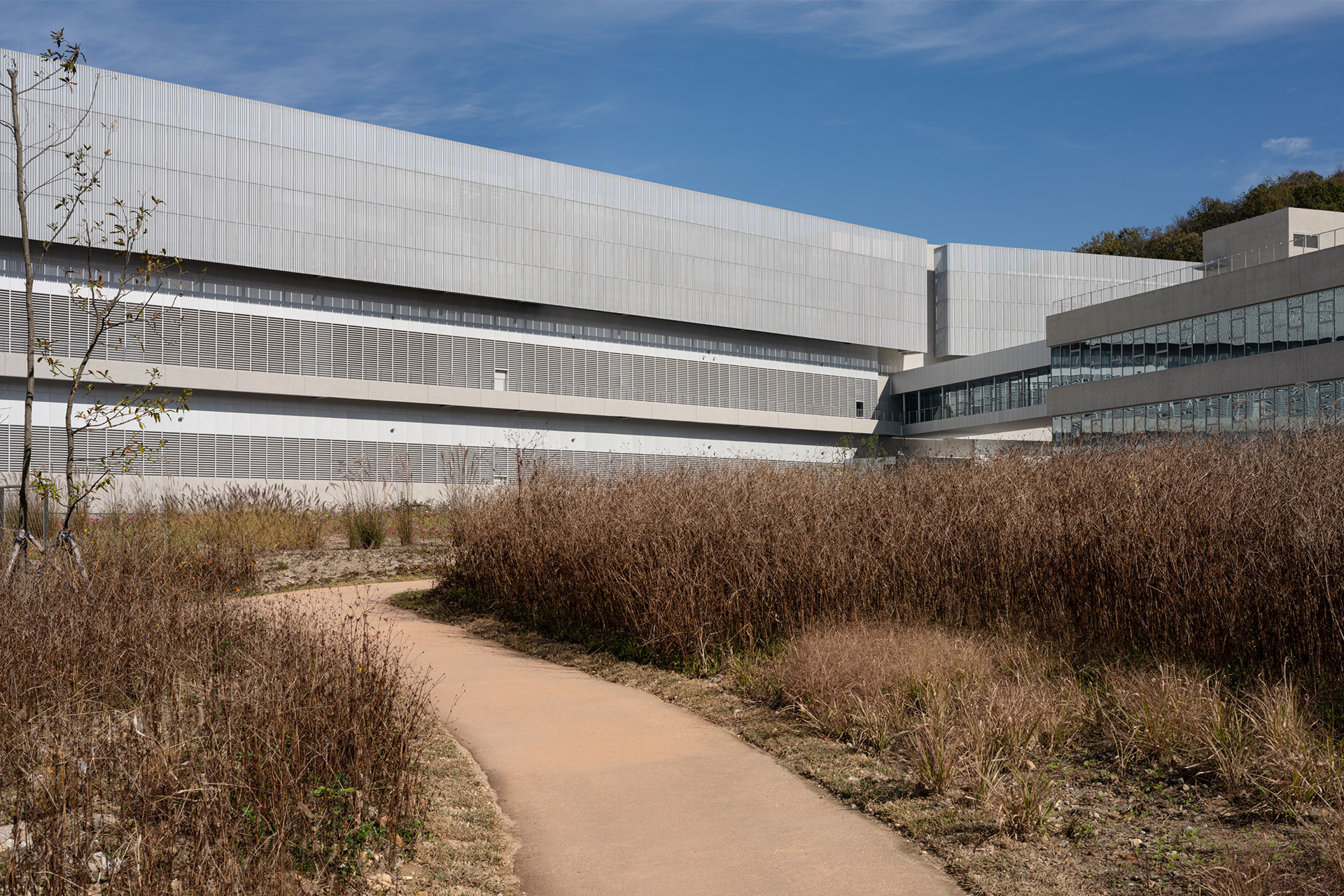
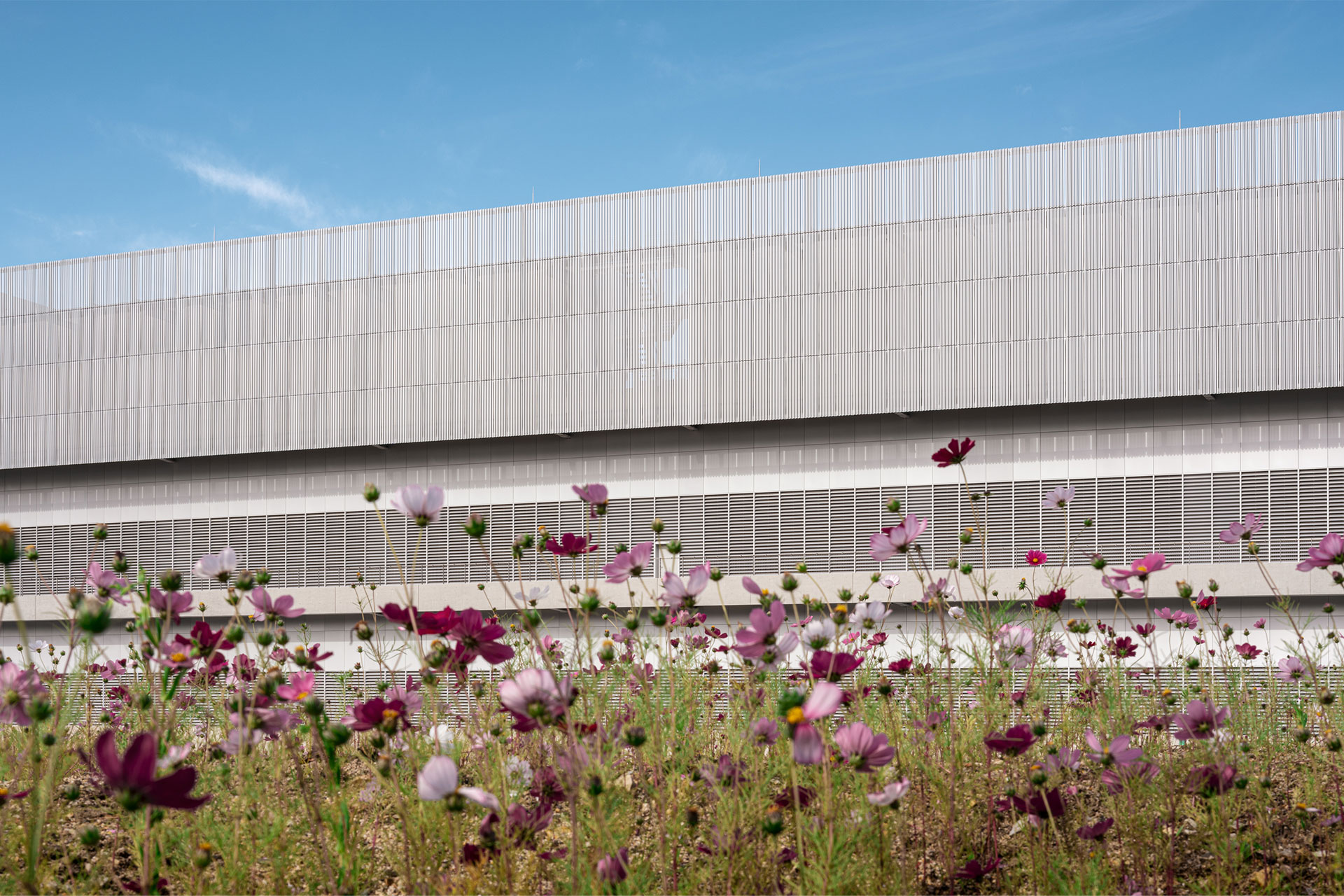
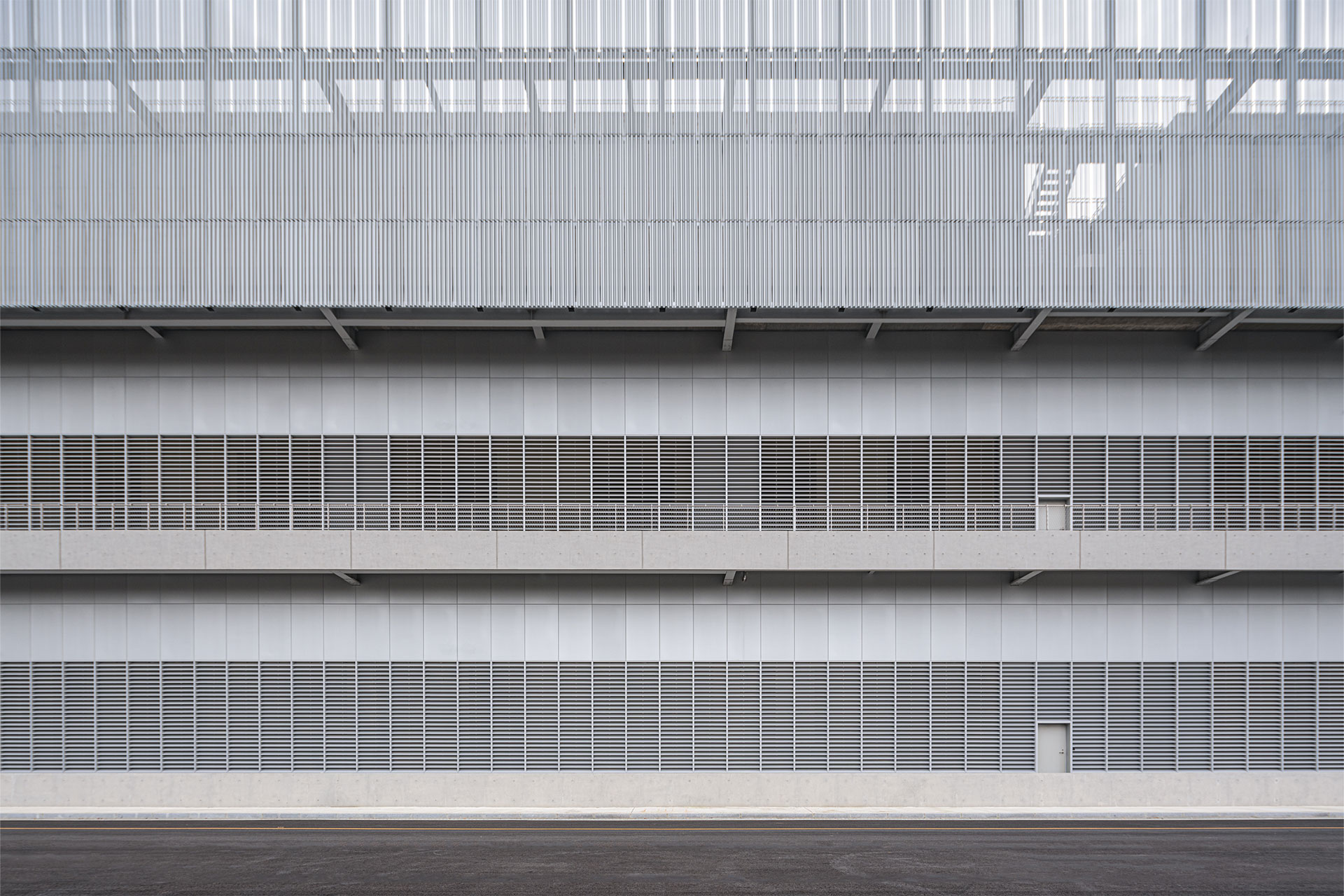
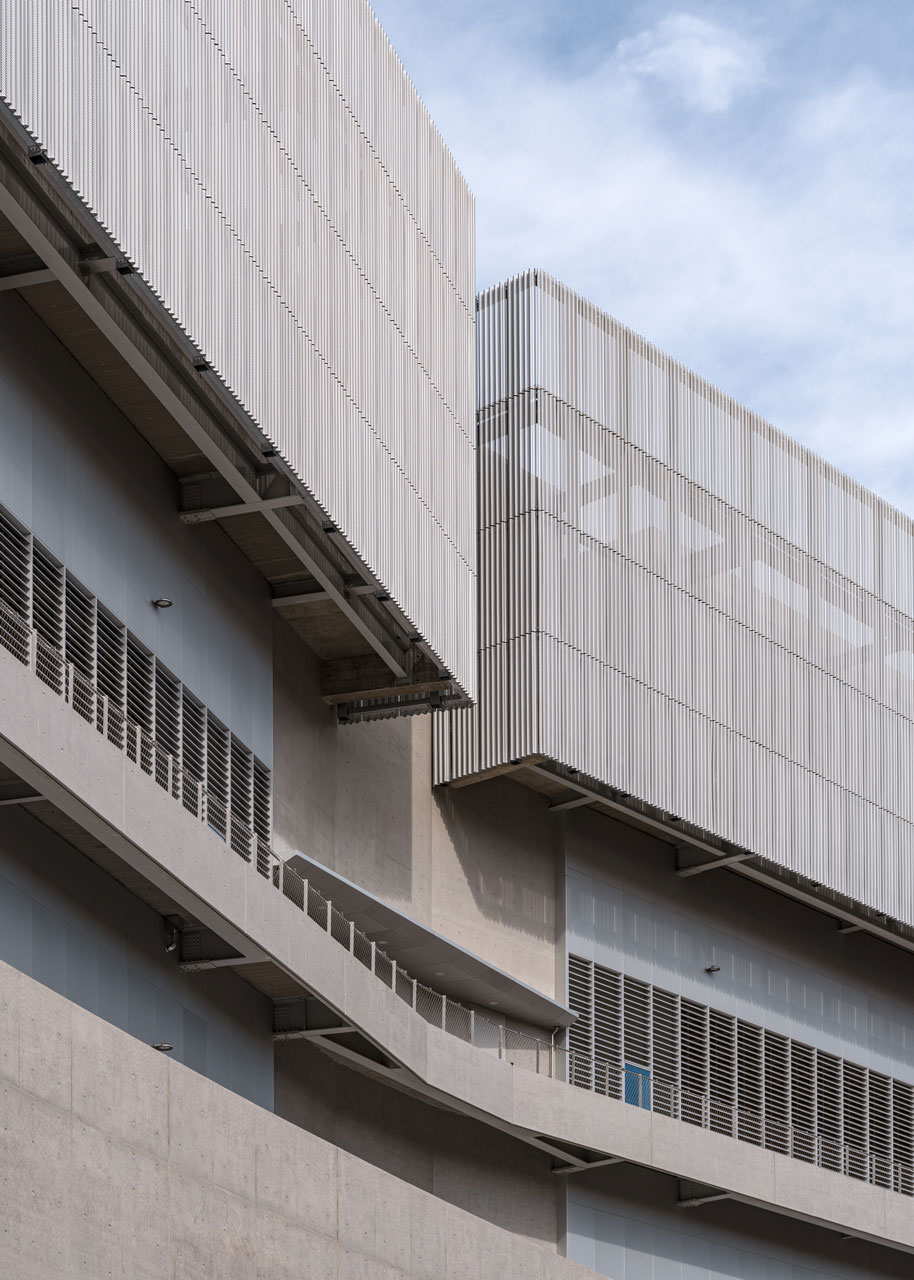
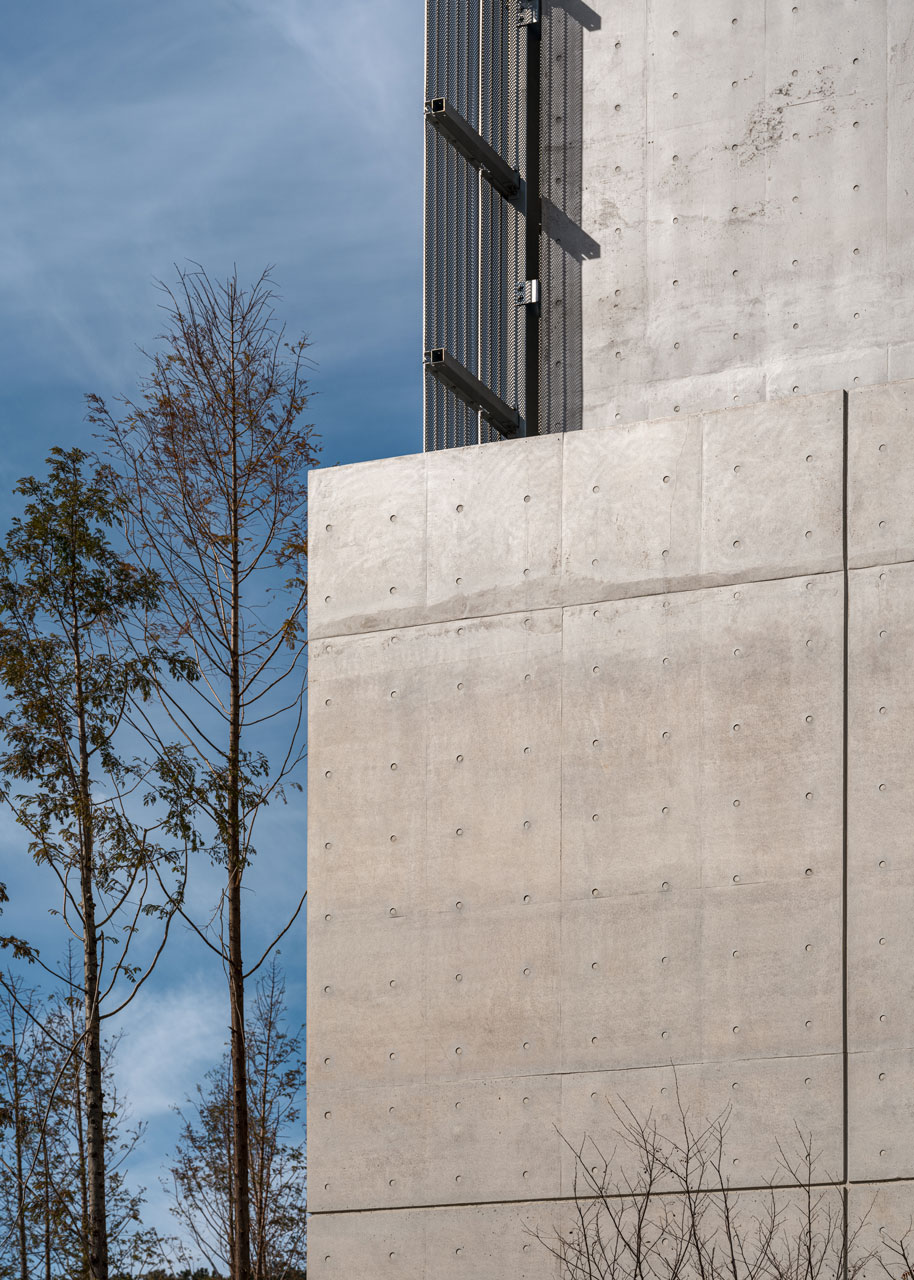
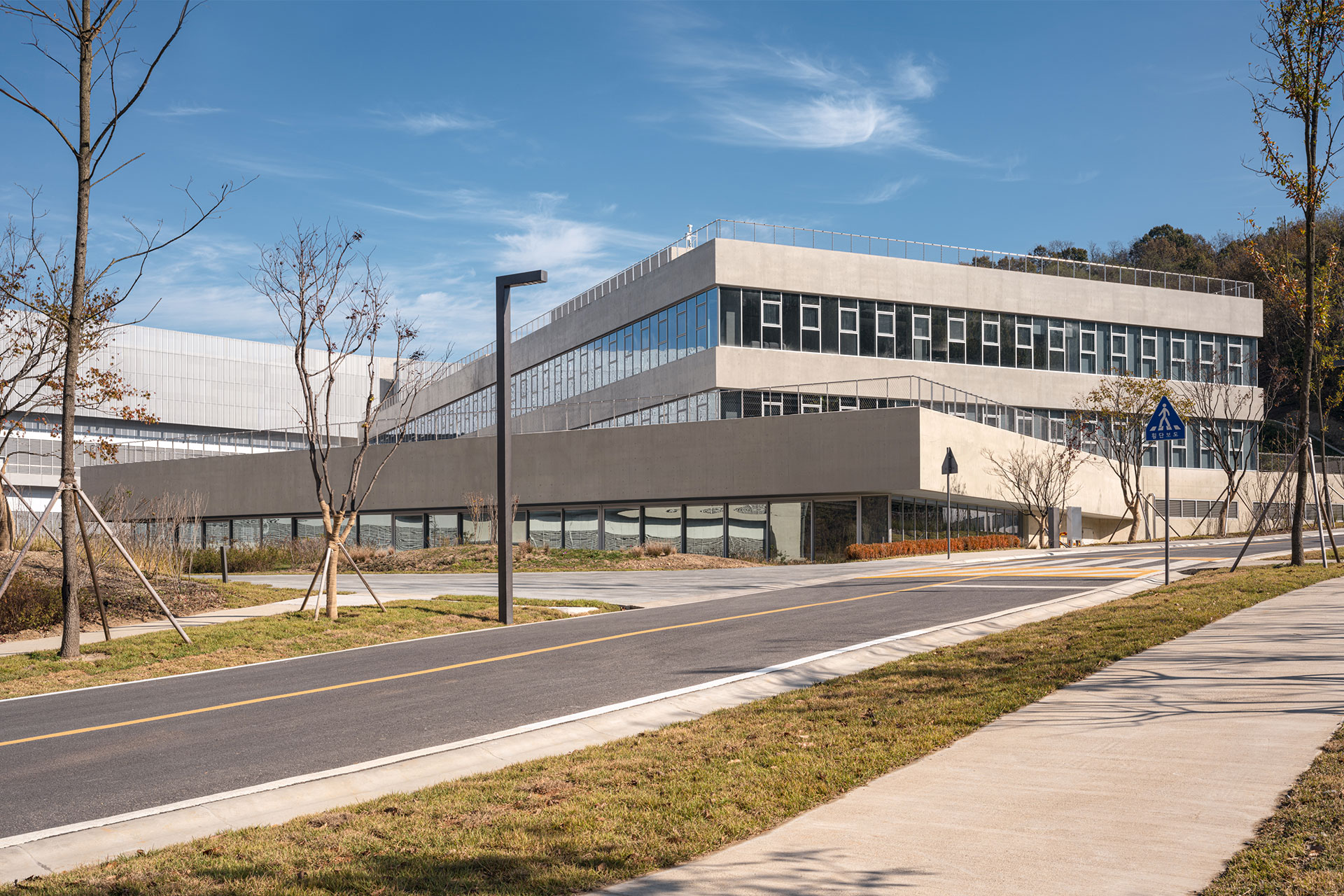
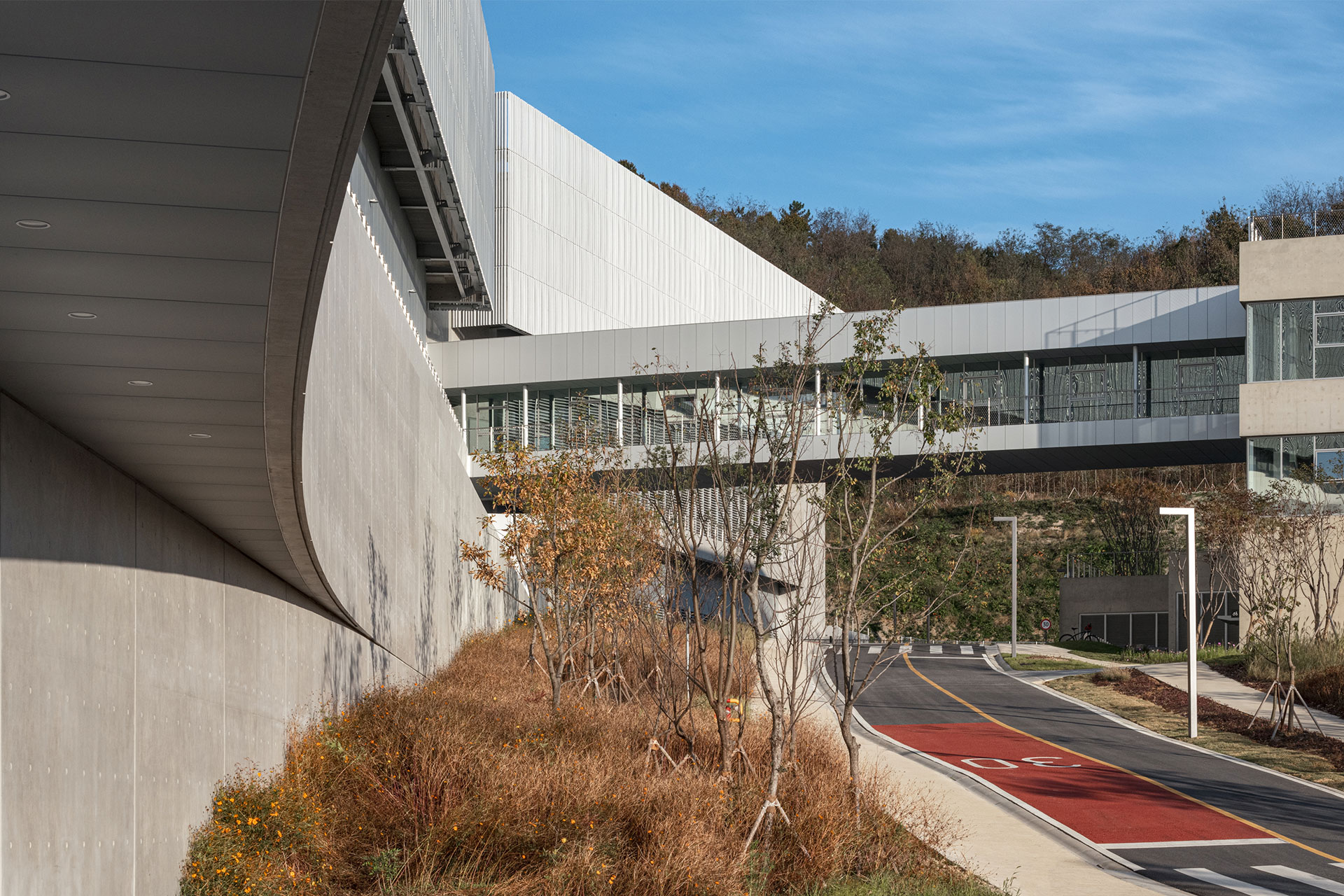
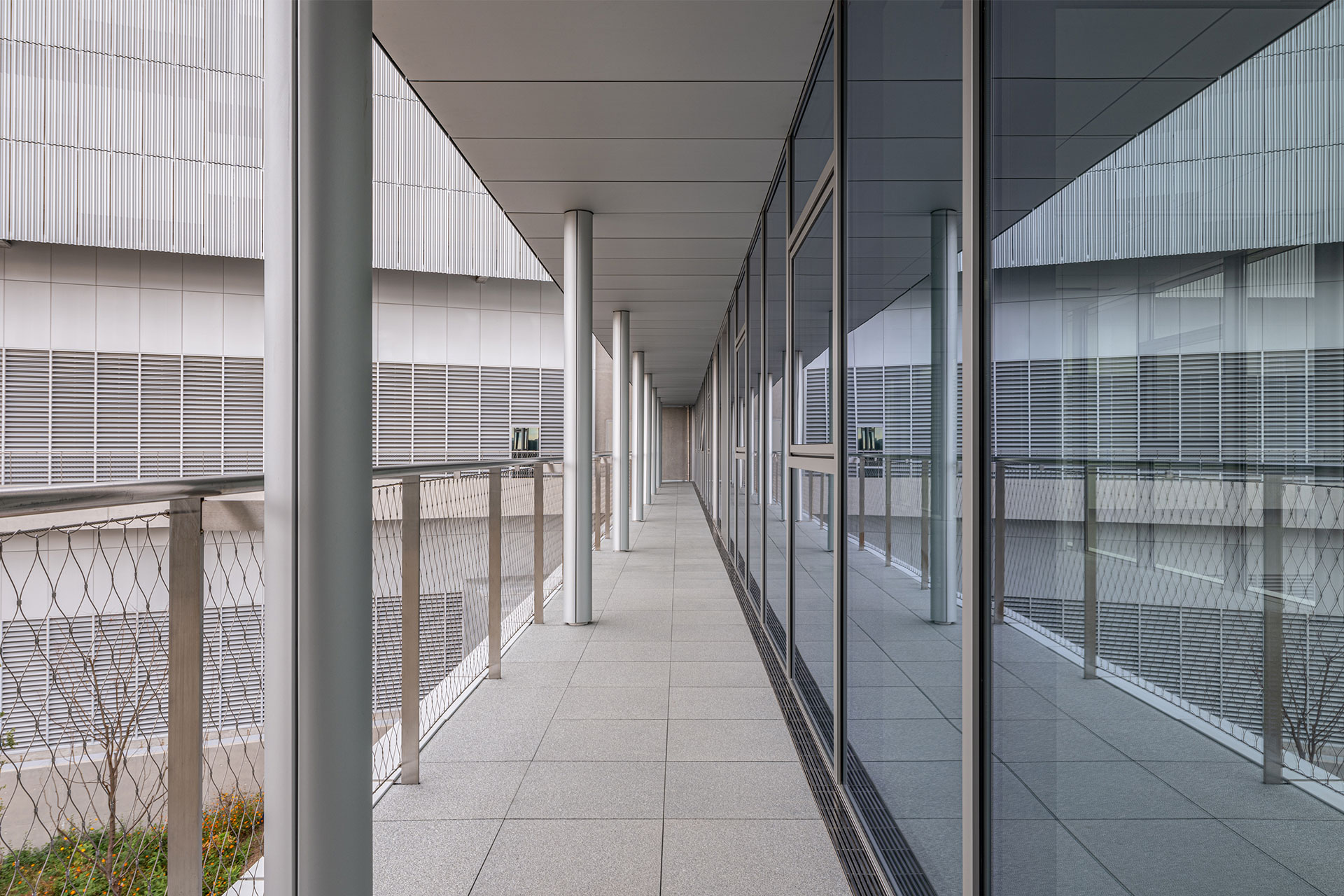
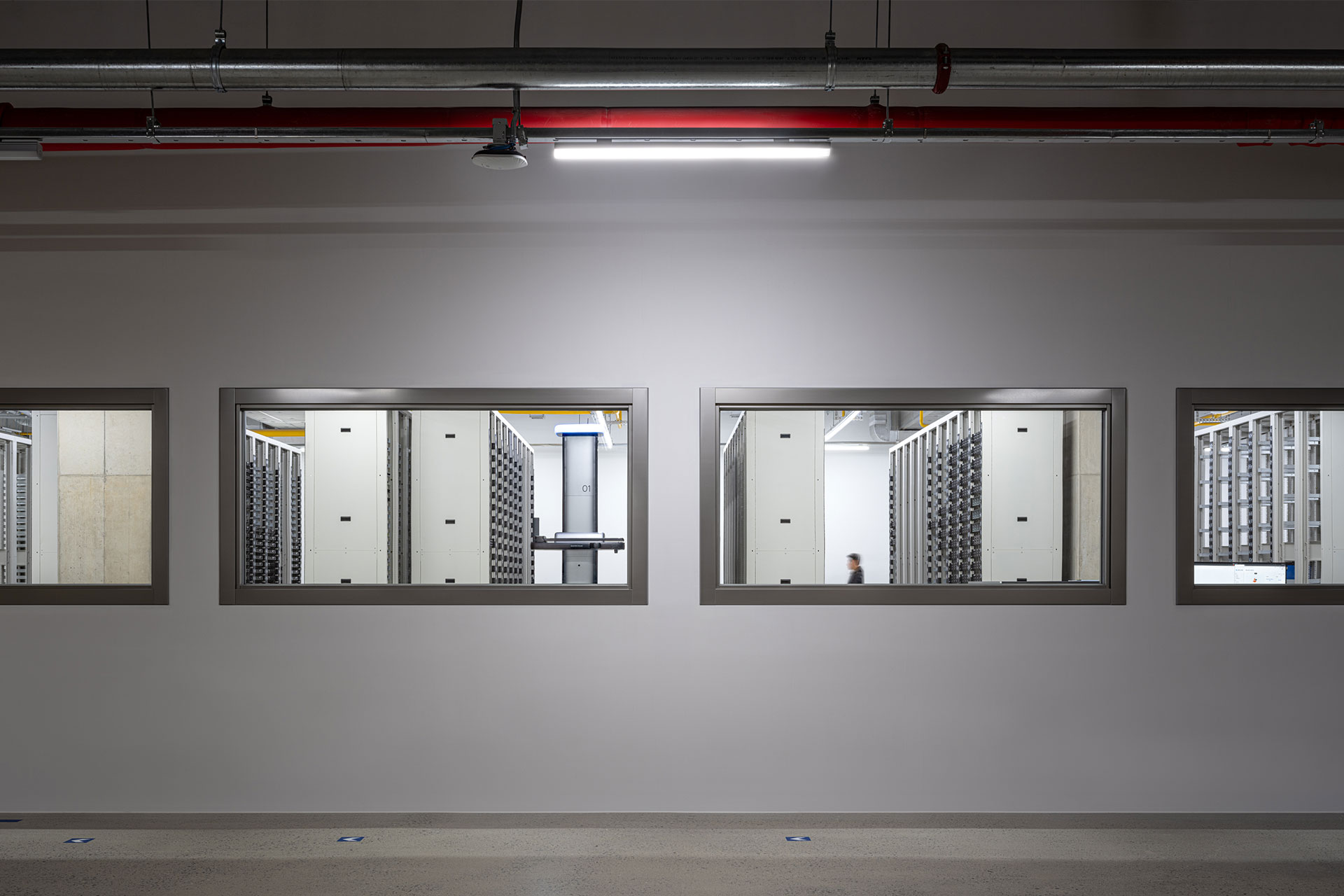
Naver Data Center Gak Sejong (hereafter “Gak Sejong”) represents a new paradigm of the hyperscale data center that embodies the value of coexistence between humanity, nature, and technology — beyond the conventional function-based standard type. Junglim Architecture, in consortium with HDR and One O One Architects, was selected as the winner of the 2020 “International Design Competition for Naver Data Center Gak Sejong.” Since then, Junglim has continued to serve as the main architect, designing the master plan, server building, and operations building, in collaboration with numerous partners including Mass Studies, Seo-Ahn Total Landscape, and Front.
Gak Sejong, completed in August 2023, consists of four main components: the server building, operations building, accommodation building, and entrance pavilion. Guided by the project’s core principle — to remain true to the essence of space, create spaces driven by function, and design with the utmost respect for the environment — the design team sought to realize a data center where people, nature, and technology coexist harmoniously. From the master plan to material selection, extensive design-stage research was undertaken to minimize the carbon footprint and ensure that excessive design interventions would not disrupt local biodiversity. The team began with a thorough analysis of the site’s existing ecology, using the results to carry out the site layout and landscape design to minimize damage to the forest ecosystem and allow for ecological recovery and resuscitation after development.
The massing of the server building was gradually refined according to the basic rack module size and its organizational layout. While primarily a technical space, its realization required careful environmental consideration, such as reducing thermal load and maintaining constant temperature and humidity. To minimize energy consumption, the façade was designed to provide ventilation and cooling through responses to seasonal winds and microclimatic conditions. In contrast, the operations building is to serve human occupants. It connects to the surrounding landscape to relieve fatigue apart from the mechanical server building, and is linked to it via a bridge, enabling administrators to respond swiftly to various operational situations.
In The Press
Archive
-
Status
Completed
-
Awards
- 2024 Korea Green Building Grand Award Minister of Trade, Industry and Energy Prize
- 2023 18th Korea Ecological Environment Architecture Awards Grand Prize in Technology Category
-
Client
NAVER
-
Program
Data Center
-
Design Year
2020
-
Completion Year
2023
-
Location
Sejong-si
-
Site area
293,697.00m2
-
Gross Floor Area
148,129.56m2
-
Building Area
39,208.56m2
-
Number of Levels
B3, 4F
-
Design
-
Partner
ONE O ONE Architects, HDR, Mass Studies
-
Participants










Naver Data Center Gak Sejong (hereafter “Gak Sejong”) represents a new paradigm of the hyperscale data center that embodies the value of coexistence between humanity, nature, and technology — beyond the conventional function-based standard type. Junglim Architecture, in consortium with HDR and One O One Architects, was selected as the winner of the 2020 “International Design Competition for Naver Data Center Gak Sejong.” Since then, Junglim has continued to serve as the main architect, designing the master plan, server building, and operations building, in collaboration with numerous partners including Mass Studies, Seo-Ahn Total Landscape, and Front.
Gak Sejong, completed in August 2023, consists of four main components: the server building, operations building, accommodation building, and entrance pavilion. Guided by the project’s core principle — to remain true to the essence of space, create spaces driven by function, and design with the utmost respect for the environment — the design team sought to realize a data center where people, nature, and technology coexist harmoniously. From the master plan to material selection, extensive design-stage research was undertaken to minimize the carbon footprint and ensure that excessive design interventions would not disrupt local biodiversity. The team began with a thorough analysis of the site’s existing ecology, using the results to carry out the site layout and landscape design to minimize damage to the forest ecosystem and allow for ecological recovery and resuscitation after development.
The massing of the server building was gradually refined according to the basic rack module size and its organizational layout. While primarily a technical space, its realization required careful environmental consideration, such as reducing thermal load and maintaining constant temperature and humidity. To minimize energy consumption, the façade was designed to provide ventilation and cooling through responses to seasonal winds and microclimatic conditions. In contrast, the operations building is to serve human occupants. It connects to the surrounding landscape to relieve fatigue apart from the mechanical server building, and is linked to it via a bridge, enabling administrators to respond swiftly to various operational situations.


